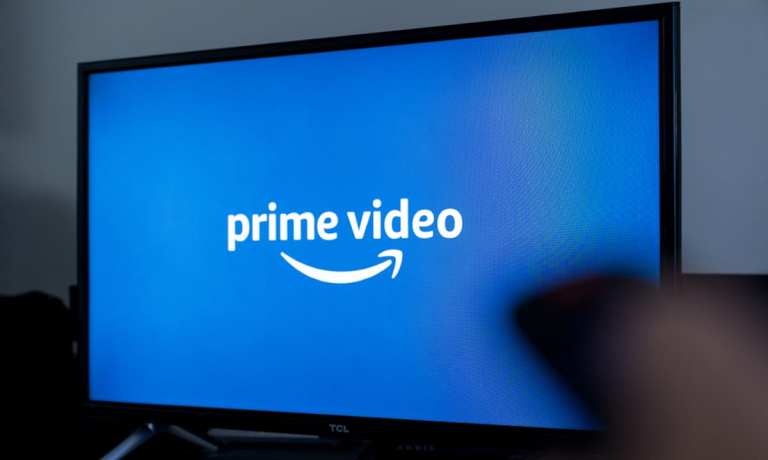Amazon Aims To Enable Purchases From TV Screens Via ‘tCommerce’

The era of “tCommerce” is upon us, if Amazon is to be believed. Amazon Studios Chief Operating Officer Albert Cheng said that after a long period of development, it seems consumers are ready to try out tCommerce, which is the buying of goods directly from their TV screens while watching programs, according to reports.
Speaking on a panel, Cheng noted that Amazon has long sought to “leverage the reach of Prime Video and marry that with commerce.” The goal, over time, is to connect the Amazon Video ecosystem to the Amazon commerce ecosystem, mediated by its growing lineup of devices and delivered by its expanding voice ecosystem.
A full integration between viewing and purchasing items on-screen is still in the very early days, Cheng said, but early experiments have proven successful. Those experiments have included programming like the live shoppable stream of Rihanna’s fashion brand Savage X Fenty, as well as Making the Cut, the reality series co-hosted by Tim Gunn and Heidi Klum, which allowed viewers to buy designs by the winning contestants.
Cheng told the panel that the effort was an “incredible success” — though true to Amazon form, he did not offer further data on that subject.
Amazon aims to build off its present success to capture the tCommerce opportunity from end-to-end. The potential for the channel has long been known, but actually fulfilling the orders has presented a staggering logistical complication.
“Like, okay, you can create these apps and figure out how to tie the content with the opportunity to purchase, but then you had to figure out how to deliver it,” said Cheng. “In order to scale that across the industry, it’s extraordinarily difficult.”
Programming, he noted, is a good context for commerce as long as the commerce doesn’t intrude on the thing the consumer actually wants to do, which is watch the show. The customer may see something they like, he said, but they don’t want to stop the process to make the purchase, so they will wait until they are done watching and try to find the item online later. Amazon aims to streamline that process so it’s easier for the consumer to shop what they see without finding it to be too distracting.
“We have this massive, global infrastructure and delivery system, and the ability to tie television and buying all on the same platform,” said Cheng.
Amazon is still testing to see what specific shows and content formats are best suited to tCommerce. Thus far, the developments are U.S.-focused, as foreign markets present a host of additional regulatory issues.
The move is yet another iteration in the expanding field of contextual commerce. As PYMNTS has reported, contextual commerce is moving beyond merely inserting commerce opportunities into contexts where consumers might appreciate them. Brands and businesses are actually looking to create the context through events and wrapping the commerce opportunity around them.
PYMNTS’ latest Product Drops report indicates that events-based commerce — including things like product drops, flash sales and private sales — are growing in popularity, with 43 percent of respondents participating in them in the last month in general, and 60 percent of bridge millennials and younger consumers participating in the same timeframe.
And these context-hunting consumers, according to the data, are a valuable lot: Among affluent consumers, 82 percent and 78 percent reported being “very” or “extremely” satisfied with their participation in flash sales and product drop events, respectively. Some of those customers are looking for savings, but they are also on the hunt for hard-to-find or rare goods, or items of a particular level of quality. Still others are just happy to have another shopping method that keeps them out of the store. And for a subset of the population, event-based shopping is desirable because it is simply a more fun way to shop.
Although tCommerce is different than other types of event-based marketing pushes, it’s also similar in that it creates an experience and then ties the commerce opportunity around it like a helpful little bow. A bow, Cheng noted in his public remarks, that could put Amazon in a competitive category of its own.
“When it comes to competitiveness, it’s hard to put us in any specific category,” Cheng said. “We play in so many different fields and products and services that at the end of the day, we’re very much in a relationship business with our customers. … We can be an SVOD product, we can be a delivery service, we can be music.”
But will Amazon remain the only major player in the tCommerce game? If the initiative ends up being a success, we can imagine players like Disney, Netflix and the entire host of streaming providers angling for a piece of the action. None of those have Amazon’s logistical talent to overcome the fulfillment challenges Cheng observed, but deep-pocketed players can afford the investment if they see a revenue-generating future in tCommerce.
Read More On Amazon:
- Amazon’s Prime Day Leaves Walmart+ Deal Days in Summer Haze
- Prime Day Sales Climb 11% as Shoppers Spend $14 Billion, Setting Record
- Amazon Prime Day First Day Sales Reach $7.2 Billion Amid Back-to-School Leap
- Bargain Hunters Fuel Amazon’s Prime Day Participation